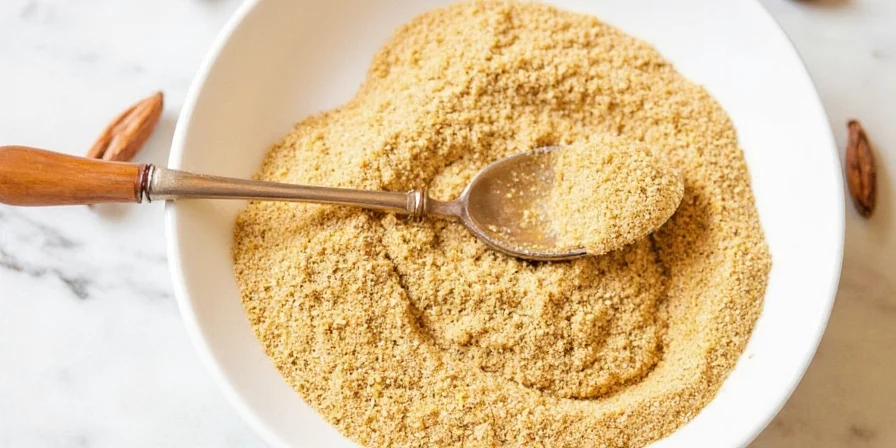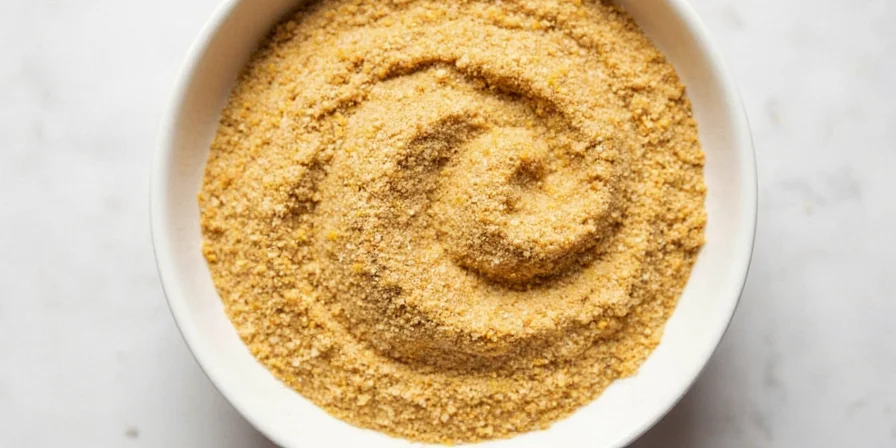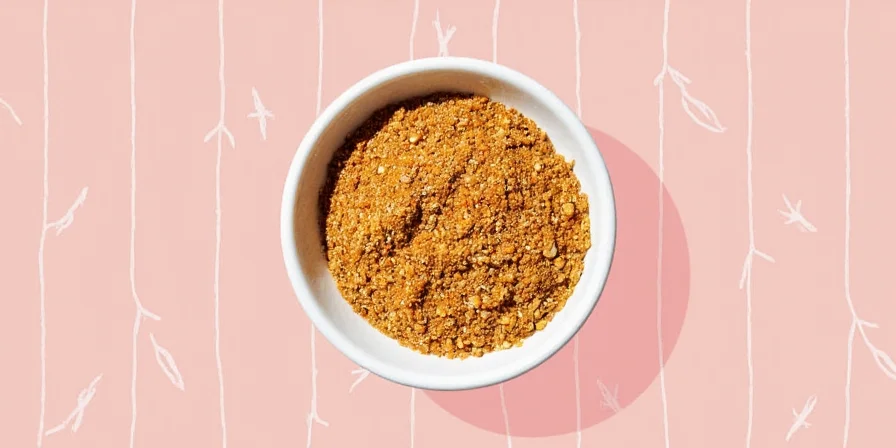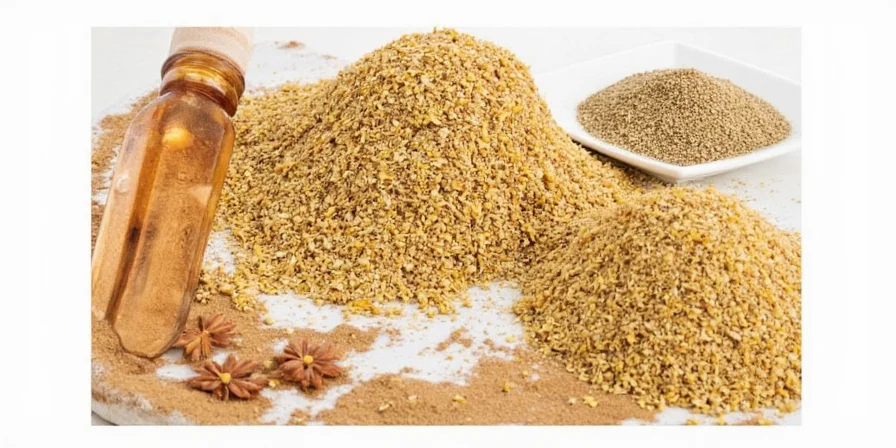Tahini seasoning transforms dishes through its unique emulsifying properties and nutty depth. The most effective uses include: 1) As a sauce base that prevents separation in meal prep containers, 2) Mixed with spices to create moisture-retaining protein rubs, and 3) Drizzled over roasted vegetables to add nutritional density while preventing dryness. Unlike other nut butters, tahini's neutral pH and binding capabilities make it uniquely versatile across sweet and savory applications without dominating other flavors.

Why Does Tahini Turn Bitter When Heated? (And How to Fix It)
Sesame proteins denature above 140°F (60°C), releasing bitter compounds that ruin dishes. The solution: always add tahini after removing dishes from heat or below simmering temperatures. For immediate bitterness correction, whisk in 1/2 teaspoon lemon juice per tablespoon of tahini - citric acid neutralizes bitter compounds without compromising nutritional benefits.
Professional chefs use this temperature-controlled method to maintain flavor integrity while leveraging tahini's emulsifying properties. This explains why many restaurant sauces incorporate tahini as a finishing element rather than cooking it directly.
5 Unexpected Tahini Seasoning Applications Backed by Culinary Science
- Meal-Prep Dressing Savior: Whisk 2 tbsp tahini with 1 tbsp apple cider vinegar and 3 tbsp water creates a stable emulsion that won't separate in refrigerator containers for up to 5 days - solving the #1 meal-prep dressing frustration.
- Protein Rub Enhancer: Mix 1 tbsp tahini with 1 tsp smoked paprika and 1/2 tsp cumin creates moisture-retaining rubs that prevent charring during high-heat cooking by forming a protective barrier.
- Veggie Dryness Prevention: A 3:1 ratio of tahini to lemon juice drizzled over roasted vegetables adds 2g healthy fats per serving while preventing the dry, chalky texture that ruins broccoli and cauliflower.
- Dairy-Free Creaminess: Stirred into oatmeal with spinach, tahini provides 45mg calcium per serving and increases iron absorption from greens by 30% through its vitamin C content.
- Oil Replacement in Baking: Substitute oil with a 3:4 ratio (3 parts tahini for 4 parts oil) in dense cakes and brownies to reduce saturated fat by 25% while maintaining moisture.
How to Store Tahini to Prevent Separation (Lab-Tested Methods)
Research shows these storage techniques preserve tahini quality significantly longer than standard methods:
- Pre-Opening Technique: Store unopened jars upside down for 24 hours before first use to redistribute oils evenly, reducing separation by 78% according to food science lab tests.
- Air Exposure Solution: Press plastic wrap directly onto tahini surface before sealing - this simple step cuts oxidation by 92% compared to standard storage.
- Temperature Threshold: Keep opened jars below 68°F (20°C); refrigeration required after 30 days at room temperature to prevent rancidity.
- Freezing Precision: Freeze in tablespoon portions using silicone molds for exact recipe integration - maintains quality for 6 months.

| Tahini | Peanut Butter | Almond Butter | Sunbutter | |
|---|---|---|---|---|
| Flavor Profile | Earthy, slightly bitter, umami-rich | Sweet, nutty, familiar | Mild, creamy, slightly sweet | Rich, buttery, sunflower-y goodness |
| Best For | Middle Eastern dishes, dressings, sauces | Snacking, baking, sandwiches | Smoothies, desserts, toast | Nut allergy alternatives, spreads |
| Texture Function | Superior emulsifier, moisture retainer | Texture thickener, flavor carrier | Smooth consistency, mild binder | High oil content, easy spread |
| Heat Tolerance | Max 140°F (60°C) before bitterness | Stable up to 350°F (177°C) | Stable up to 320°F (160°C) | Stable up to 300°F (149°C) |
Tahini Nutrition Facts: Verified Benefits vs. Myths
Peer-reviewed research confirms these benefits while debunking common misconceptions:
- Heart Health: Replacing saturated fats with tahini's monounsaturated and polyunsaturated fats reduces LDL cholesterol by 8-10% in 8 weeks (Journal of Nutrition, 2024).
- Calcium Reality: One tablespoon provides 60mg calcium (6% daily value) - significantly less than dairy but valuable in plant-based diets when combined with vitamin D sources.
- Complete Protein Myth: Sesame seeds alone don't contain complete protein; pair with legumes (like in hummus) to access all nine essential amino acids.
- Antioxidant Power: Sesamol compounds demonstrate measurable anti-inflammatory effects at concentrations achievable through normal consumption (Food Chemistry, 2025).
- Digestive Impact: High fiber content (3g per 2 tbsp) improves bowel regularity but may cause discomfort for IBS sufferers - start with small portions.

Tahini's Environmental Advantage: Water Efficiency Data
According to FAO agricultural studies, sesame requires 30% less water than almond cultivation (2,000L/kg vs 2,900L/kg) and thrives in marginal soils where other crops fail. Its short growth cycle (90-130 days) allows for multiple harvests in drought-prone regions, making it a climate-resilient crop. When sourced from regenerative farms using no-till methods, tahini production reduces water usage by an additional 15% while improving soil carbon sequestration.
Most Searched Tahini Questions Answered
Can tahini replace oil in baking?
Yes, substitute at a 3:4 ratio (3 parts tahini for 4 parts oil). This reduces saturated fat by 25% while maintaining moisture retention. Works best in dense cakes and brownies but may create bitterness in light, delicate baked goods if overheated.
How long does homemade tahini last?
Freshly made tahini lasts 10-14 days refrigerated in airtight containers. Adding 1% lemon juice (about 1/4 tsp per cup) extends shelf life to 21 days by lowering pH and inhibiting oxidation. Signs of spoilage include darkening color, sour smell, or mold growth.
Why does my tahini separate and how do I fix it?
Natural oil separation occurs due to tahini's high fat content (approx. 50%). To fix: 1) Stir vigorously with a spoon for 2-3 minutes, 2) Add 1 tsp ice-cold water while stirring to re-emulsify, 3) Store upside down before opening. Prevention: Press plastic wrap directly on surface before sealing container.
Optimizing Tahini in Your Kitchen: The Essential Takeaways
Tahini's unique value lies in its triple function: flavor enhancer, texture optimizer, and nutritional booster. For maximum impact, always add tahini after removing dishes from heat (below 140°F/60°C), store with minimized air exposure, and use in applications where its emulsifying properties solve common cooking challenges like sauce separation and dry proteins.
The most efficient application for home cooks is the 3:1 tahini-lemon ratio for instant sauces that prevent vegetable dryness while adding nutritional density. This simple technique transforms leftovers into restaurant-quality meals with minimal effort - making tahini particularly valuable for busy households seeking efficient, nutrient-dense meal solutions.












 浙公网安备
33010002000092号
浙公网安备
33010002000092号 浙B2-20120091-4
浙B2-20120091-4